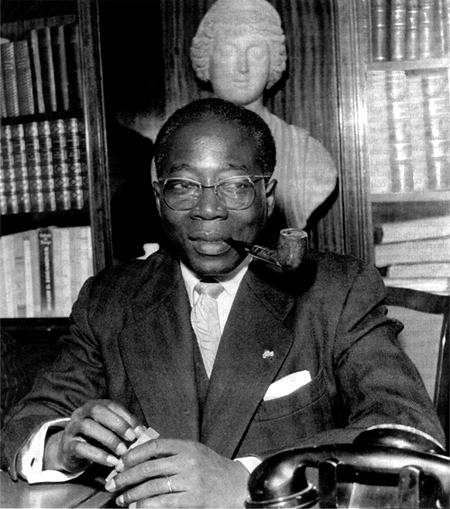Tomorrow, on the first day of class, we’ll be discussing the song “Les Colonies” by MC Solaar. You can download the song on i-tunes, and can also hear it in the video below, accompanied by images of the slave trading fort in Gorée island, near Dakar, Senegal. The song early on evokes the “paysage de Gorée,” and evokes its history: the island was a major departure point for French slavers departing for the trans-Atlantic slave trade, and the fort is famous for a doorway leading out to the water, known as the “door of no retun.” Click here for a virtual visit of the island prepared by UNESCO, which has declared it a World Heritage Site.
MC Solaar makes a connection in the song between the past of slavery and contemporary forms of exploitation and migration linking Europe and Africa.
Below are the lyrics in French, and a translation of the first verse. Please share your thoughts and comments about the song in the comments section below.
MC Solaar, “Les Colonies” (2001)
On a connu les colonies, l’anthropophage économie
La félonie la traite d’esclaves, la dette, le F.M.I.
Bruno, Jean-Marie, si j’cours j’ai mes raisons
Les mêmes que les deux nègres maigres sous un avion
Avant c’était déjà grave de voir des fers qui entravent
Paysage de Gorée, Maisons des esclaves
Cave sans amour, sans retour ni recours
Sans cours de cassation, sans oreille pour entendre “au secours”
Où sont passés les baobabs et les hordes de gosses
Dans cette ère de négoce où ne vivent que le big boss
Rentablité – instabilité – imbécilité
N’ont fait qu’augmenter les taux de mortalité
Ce sont des larmes qui coulent dans nos artères
Psychose séculaire j’ai peur quand j’entends charter
Parfois je rêve de mettre un gun dans un paquet d’chips
De braquer la Banque Mondiale. Pour tout donner au townships.
C’est trop complexe. Où sont les droits de l’Homme?
L’Homme laisse l’Homeless homeless zigzague et slalome
Donc shalom à tous les gens qui ont connu la haine
Aux enfants de Bohême, Solaar Mamadou Cohen
En soliloque je développe des antidotes non-stop
F**k la parlotte et démenotte les brainlocks.
Je suis socio-poétique sur mike ou sur cahier
Sans brailler. On n’est pas frileux. Pas peur de cailler.
On a connu les colonies
Par le passé, y a beaucoup d’actes qui nous ont mis les nerfs
Frères et sœurs c’est l’heure du pacte pour ce millénaire
L’enfer gère la Terre Mère, Lucifer et Faust
Entrent dans leurs têtes dans le but de refaire l’Holocauste
J’ai vu des mecs parler de haine à la tribune
D’une façon scientifique. Élimination par l’urne !
Donc j’donne la paix à ceux qui me suivent dans l’OPA.
Face à la barbarie, cela sans mea culpa
Si on est là c’est pour toujours pousser l’amour
Pour que nos parcours, chaque jour, coupent la route aux vautours
Et va pas croire cette fois qu’ce sont des bavures
Je t’assure. S’ils ont la haine, on a la bravoure.
Une petite fille vient de naître, elle s’appelle Mélissa
Et si j’opte pour le vote, c’est pour pas qu’elle vive ça.
La vie est belle petite, malgré ces quelques pitres
Fin d’chapitre pour tous les gosses dès l’âge du pupitre.
On a connu les colonies …
Translation of First Verse:
We’ve known colonies, cannibal economies
Felony, the slave trade, debt, the I.M.F.
Bruno, Jean-Marie, if I run I’ve got my reasons
The same as those two skinny kids under the airplane
Before it was already sad to see the chains that locked up
The landscape of Gorée, the Maison des Esclaves
Caves without love, without return or recourse
Without a court of justice, with no ears to hear “help”
Where have the baobabs and crowds of kids gone
In this era of business only the big boss lives
Profit – instability – stupidity
Have only increased mortality
There are tears running through our arteries
A secular psychosis, I’m scared when I hear “charter”
Sometimes I dream of putting a gun in a bag of chips
Holding up the World Bank to give everything to the townships
It’s too complex, where are the Rights of Man?





